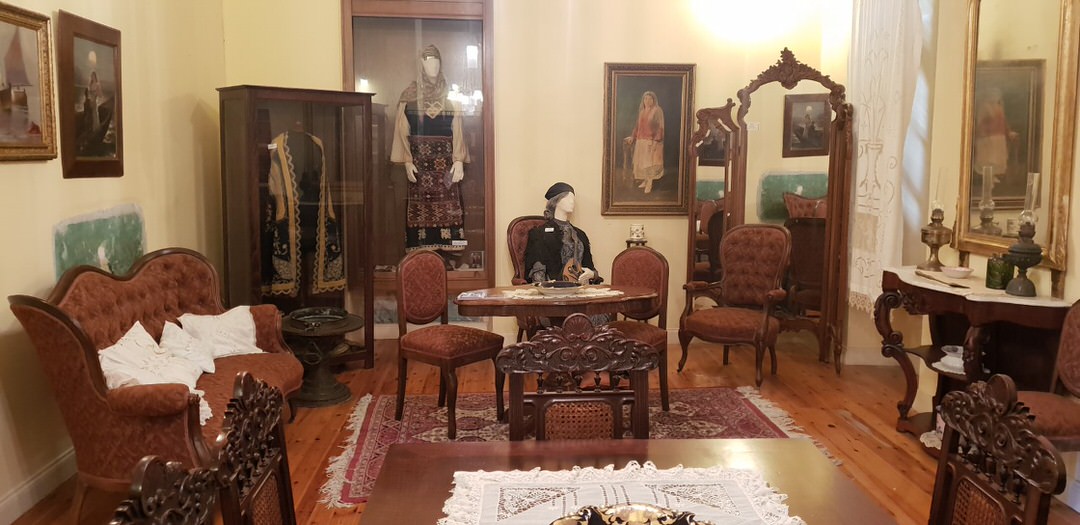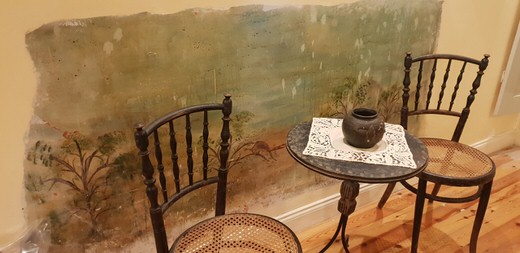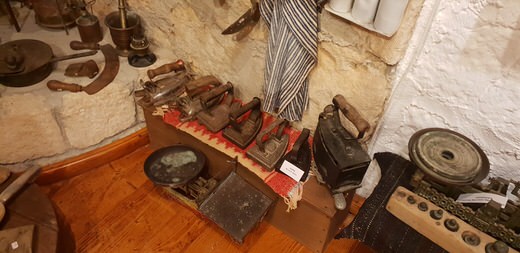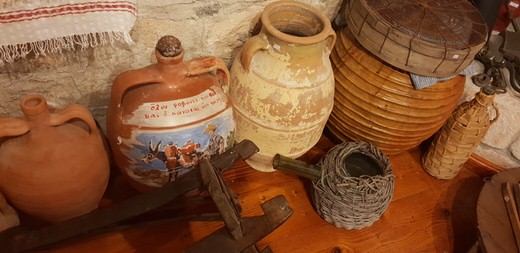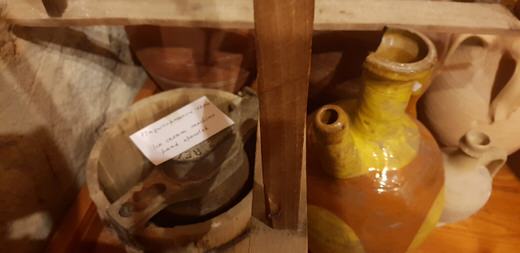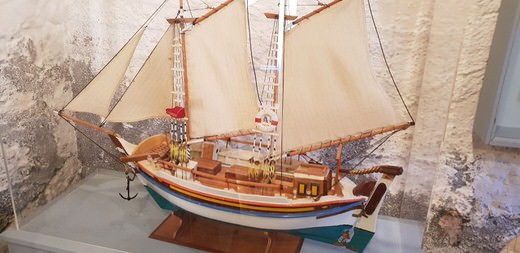Visiting a museum dedicated to the popular traditions of an area and the way of everyday life of its people, always offers the chance of a deeper insight and a better understanding of this particular land. The Historical and Folklore museum of the beautiful island of the Saronic Golf, although small in size, is a great way of getting acquainted with a past era that comes alive through the collections of carefully preserved and beautifully displayed objects.
These collections that form the museum are displayed in a typical neoclassical house of the period that Aegina was the first capital of the new Greek state. The renovated, two storey building used to be the residence of Panagis Iriotis, doctor of Philology, scholar of Ancient Greek and Latin Literature, Archaeology and Folklore, teacher and headmaster of “Scholarchio”, the first educating institution for teachers in Aegina. His daughter, Polymnia, who inherited the house, bequeathed the building to the Municipality of Aegina with the condition that it would house the rich library and archives of her father, along with various traditional objects that she had collected over the years. Her friend Dr. Georgia Koulikourdi, made the establishment of the Folklore museum her life goal and contributed greatly to its realization. Since its early years the museum acquired many supporters who formed the “Association of the Friends of the Folklore Museum”. Thanks to their efforts to raise money from donations, bazaars, festivals and exhibitions, all the damage that the 1981 earthquake had caused was restored and the museum not only survived but it was also enriched.
So these days, all visitors can travel back in time and get a good idea of what life used to be like in Aegina 200 years ago. An urban “Aeginetean House” comes to life on the first floor, with the representation of a study room, a dining room and a living room of an upper class family. Costumes, decorative objects, furniture, paintings, family portraits, knitting tools to weave lace according to a local method and creations of this art, revive the customs and habits of Polymnia and her era. On the other hand, the daily activities and way of life of countrymen are accurately represented in the “House of the Village” through an extended display of objects of daily life, agricultural and knitting tools. You’ll even see a loom, an iron kitchen tool for making mashed potatoes and a manual ice cream maker! Along with the village house on the ground floor you can also visit the “House of a Fisherman”, with a lovely collection of fishing boat miniatures and fishing equipment. Of particular interest is the part that recounts the story of sponge fishing with old photos of Aegina’s divers.
Before you conclude your visit, don’t forget to check out for any events that might be taking place in the yard of the museum. These may include temporary exhibitions, cultural festivals and theatre plays. As the museum is centrally located on the main commercial street of Aegina town and is open daily, you can pay a visit to it even if you’re on a day’s trip on the island. It’s a great way of spending an hour travelling back in time and discoursing with Aegina’s routes.
View the gallery

